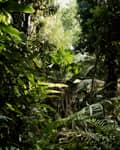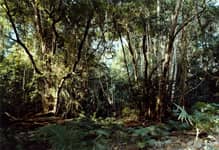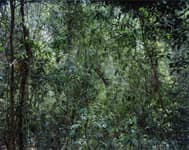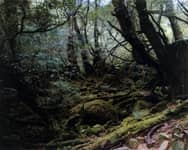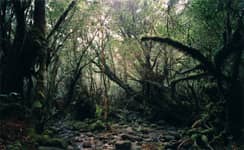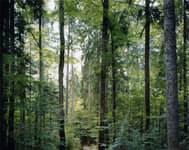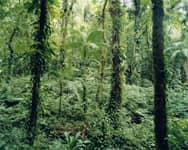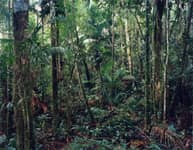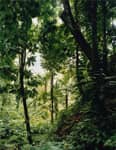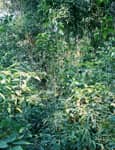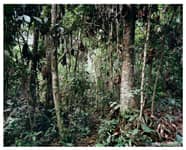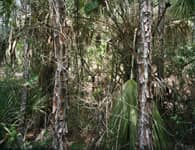Intrigued by Mayan culture and its intricate relationship to nature, Struth had first planned to make an expedition to the tropical rainforests of Central America as early as 1982. A visit to Mexico in 1993 was prepared and then cancelled due to the political situation in Chiapas at the time. Around 1996, Struth formulated a plan for the Paradise pictures, to the extent of already envisaging an installation with several works surrounding the viewer. He began to research forests and jungles around the world, using trips to China, Japan and Australia, often scheduled for other reasons, to seek out possible locations. The first eight of the Paradise pictures were made in the tropical rainforest in Daintree in the northeast of Australia in 1998. Struth then made several works in Yunnan province in China, on the island of Yakushima in Japan, and in the forests of Bavaria, Germany, in 1999.
Struth then continued the series with trips to tropical rainforests in Yuquehy, Brazil, in 2001, Peru in 2003 and 2005, Hawaii in 2006 and New Smyrna Beach in Florida in 2007 (at the same time, Struth was beginning a very different series with visits to Cape Canaveral in Florida). In total the series of New Pictures from Paradise comprises 36 works, all on a large scale. The method of making these works was very different from that used for Museum Photographs, where Struth often took a large number of photographs, each one different because of the constant variations caused by the movement of people before selecting one particular picture. By contrast, he was able to make the Paradise pictures in a much more economical way, using over half of the plates he made. Struth considers the Paradise pictures to be his “most intuitive” body of work, formed primarily by a more purely pictorial approach which he believes was influenced by his long years of practising Tai Qi.
At the same time Struth recognises that some of the photographs are informed by certain motifs and elements relating to a specific culture. Several of the works made in Yakushima in Japan foreground the growth of moss, stones and ancient trees and appear to reference the tradition of Japanese gardens. The photographs made in the rainforests of Peru and Brazil connect with the idea of an exuberant Latin American culture whilst the works made in the pine forests of Bavaria draw on the formative importance of the motif of the forest— ‘Der Deutsche Wald’—in German art and literature.
With the Paradise pictures, and later with the Audience series, the actual installation of the works in the space of the exhibition becomes a crucial concern.

